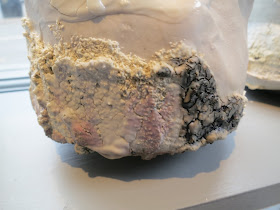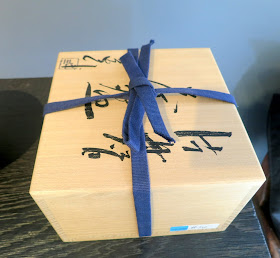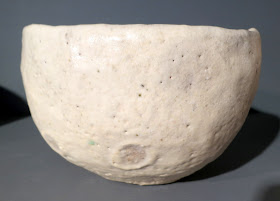Rembrandt's first paintings, at the Ashmolean in Oxford.
The Senses are the earliest surviving works of Rembrandt van Rijn.
They were created around 1624-25 when Rembrandt was still a teenager. They are clearly the creations of a young artist who is still developing his own style but they already show great promise: bold use of bright colours, broad brushwork, an ability to capture human emotions, and an experimental treatment of light.
This is the first time that the four surviving panel paintings - depicting sight, hearing, smell and touch - have been on show together, after
Smell was rediscovered in 2015. The thereabouts of
Taste are currently unknown.
The five senses were a popular allegorical theme in the art of the Low Countries. Traditionally each was represented as a female figure, for instance an elegant woman holding a flower symbolised smell. Gradually the five senses were interpreted in a more moralising fashion, underlining that their excessive indulgence could result in sin. From the 17th century onwards the senses were depicted as genre scenes featuring debauched peasants, where drunkenness might represent taste and amorous couples embracing might symbolise touch. Rembrandt's Senses clearly belong to this later type and depict three half-length figures in constricted spaces, engaged in an activity related to the specific sense. Rembrandt also incorporated a subtle undertone of satire in each painting.
A Pedlar selling Spectacles (allegory of Sight), (oil on panel)
A pedlar carrying an open basket in which shiny pince-nez are displayed. A squinting woman is trying on one of the glasses as the street vendor hands another pair to the wrinkled man on the left. While this appears to be a simple genre scene, Rembrandt intended a double meaning as in Dutch 'selling someone glasses' also means 'deceiving someone'.
The shiny frames of the pince-nez and the glistening clasp of the pedlar's money pouch are conveyed with just the subtlest of light accents.
Three Singers (Allegory of Hearing), (oil on panel)
An elderly couple and their young son are singing together in a dimly lit room. The father is beating time with his right hand. This seemingly straightforward domestic scene might suggest a deeper meaning as several Dutch proverbs compare the beautiful harmony produced by youthful singers to the unsteady voices of the elderly.
The two halves of the song book do not match in size, perhaps a sign of the immature Rembrandt struggling with perspective? However, other elements of the work demonstrate that the young Rembrandt was already a gifted painter: the textile of the turban worn by the woman is depicted convincingly while the man's white neckerchief is superbly rendered by just a few zigzags and the fur lining of the man's purple jacket seems almost tangible, despite being applied with just a few brush strokes.
Unconscious Patient (Allegory for Smell), (oil on panel)
A young man appears to have fainted and a woman holds a cloth with smelling salts under his nose in the hope of reviving him. The man's pale forearm suggests that his unconscious state might be due to a bloodletting procedure. The bearded man on the left is probably the barber-surgeon as his surgical instruments hang on the back wall. Rembrandt's earliest known signature is written on the drawing or print pinned to the cupboard at right: the Latin monogram RHF stands for 'Rembrandt, son of Harmen, made this'.
This panel was only recently discovered when it appeared at a small auction house in New Jersey in September 2015.
Stone Operation (Allegory of Touch), (oil on panel)
A barber-surgeon is operating on a man who is cringing with pain and clenching his fists as a lancet is inserted into his scalp. A craggy man with a hooked nose acts as the surgeon's assistant by holding a candle and a pouch with surgical instruments clipped onto his sleeve. This is probably a stone removal operation, often performed by quacks in order to relieve desperate patients from their headaches. Rembrandt again incorporated a double meaning in this scene as in Dutch 'cutting out a stone' could mean 'fooling someone'.
The young Rembrandt cleverly uses a candle as the sole light source in the room, and this casts deep shadows on the figures highlighting their wrinkled skin. Yet the men's hands are not skilfully defined and seem to lack finger joints, while the assistant is almost a caricature. Rembrandt may have used his father as a model for the portrait of the barber-surgeon.


























































